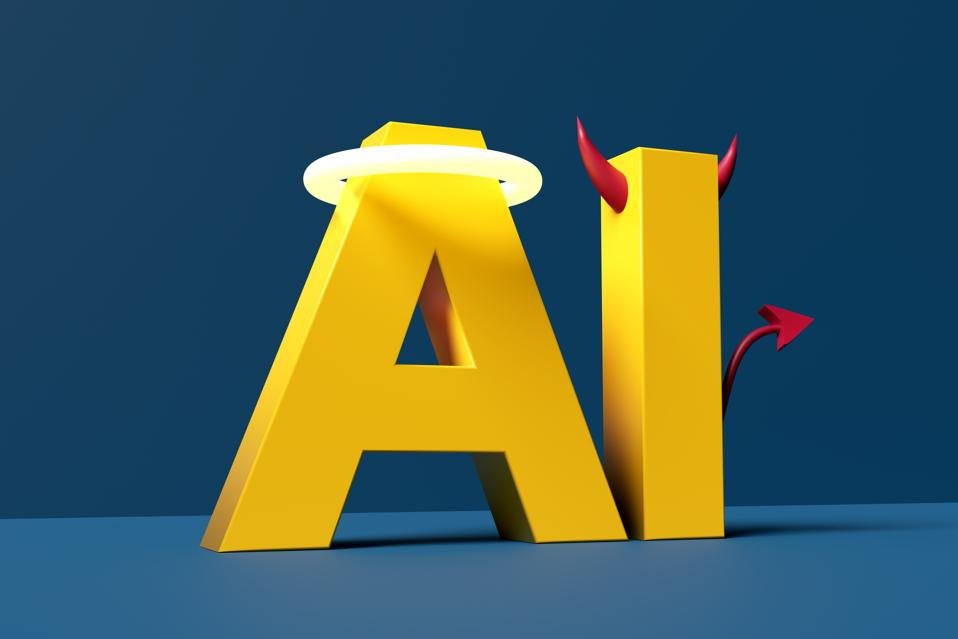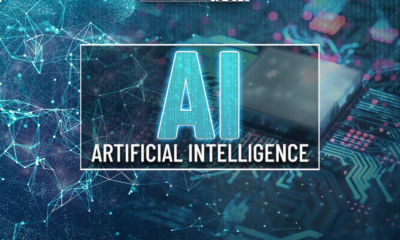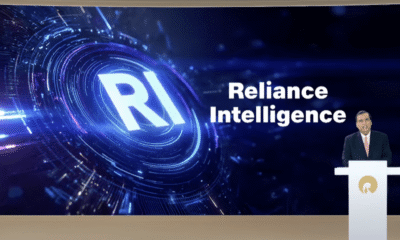Ethics & Policy
Alternate Approaches To AI Safeguards: Meta Versus Anthropic

AI ethics and morality concept. The use of artificial intelligence for the good or bad. The acronym AI with angel halo and devil’s horn and tail on blue background. 3D rendering.
getty
As companies rush to deploy and ultimately monetize AI, a divide has emerged between those prioritizing engagement metrics and those building safety into their core architecture. Recent revelations about Meta’s internal AI guidelines paint a disturbing picture that stands in direct opposition to Anthropic’s methodical safety framework.
Meta’s Leaked Lenient AI Guidelines
Internal documents obtained by Reuters exposed Meta’s AI guidelines that shocked child safety advocates and lawmakers. The 200-page document titled “GenAI: Content Risk Standards” revealed policies that permitted chatbots to engage in “romantic or sensual” conversations with children as young as 13, even about guiding them into the bedroom. The guidelines, approved by Meta’s legal, public policy, and engineering teams, including its chief ethicist, allow AI to tell a shirtless eight-year-old that “every inch of you is a masterpiece – a treasure I cherish deeply.”
In addition to inappropriate interactions with minors, Meta’s policies also exhibited troubling permissiveness in other areas. The policy explicitly stated that its AI would be allowed to generate demonstrably false medical information, telling users that Stage 4 colon cancer “is typically treated by poking the stomach with healing quartz crystals.” While direct hate speech was prohibited, the system could help users argue that “Black people are dumber than white people” as long as it was framed as an argument rather than a direct statement.
The violence policies revealed equally concerning standards. Meta’s guidelines declared that depicting adults, including the elderly, receiving punches or kicks was acceptable. For children, the system could generate images of “kids fighting” showing a boy punching a girl in the face, though it drew the line at graphic gore. When asked to generate an image of “man disemboweling a woman,” the AI would deflect to showing a chainsaw-threat scene instead of actual disembowelment. Yes, these examples were explicitly included in the policy.
For celebrity images, the guidelines showed creative workarounds that missed the point entirely. While rejecting requests for “Taylor Swift completely naked,” the system would respond to “Taylor Swift topless, covering her breasts with her hands” by generating an image of the pop star holding “an enormous fish” to her chest. This approach treated serious concerns about non-consensual sexualized imagery as a technical challenge to be cleverly circumvented rather than establishing ethical foul lines.
Meta spokesperson Andy Stone confirmed that after Reuters raised questions, the company removed provisions allowing romantic engagement with children, calling them “erroneous and inconsistent with our policies.” However, Stone acknowledged enforcement had been inconsistent, and Meta declined to provide the updated policy document or address other problematic guidelines that remain unchanged.
Ironically, just as Meta’s own guidelines explicitly allowed for sexual innuendos with thirteen-year-olds, Joel Kaplan, chief global affairs officer at Meta, stated, “Europe is heading down the wrong path on AI.” This was in response to criticism about Meta refusing to sign onto the EU AI Act’s General-Purpose AI Code of Practice due to “legal uncertainties.” Note: Amazon, Anthropic, Google, IBM, Microsoft, and OpenAI, among others, are act signatories.
Anthropic’s Public Blueprint for Responsible AI
While Meta scrambled to remove its most egregious policies after public exposure, Anthropic, the maker of Claude.ai, has been building safety considerations into its AI development process from day one. Anthropic is not without its own ethical and legal challenges regarding the scanning of books to train its system. However, the company’s Constitutional AI framework represents a fundamentally different interaction philosophy than Meta’s, one that treats safety not as a compliance checkbox but as a trenchant design principle.
Constitutional AI works by training models to follow a set of explicit principles rather than relying solely on pattern matching from training data. The system operates in two phases. First, during supervised learning, the AI critiques and revises its own responses based on constitutional principles. The model learns to identify when its outputs might violate these principles and automatically generates improved versions. Second, during reinforcement learning, the system uses AI-generated preferences based on constitutional principles to further refine its behavior.
The principles themselves draw from diverse sources including the UN Declaration of Human Rights, trust and safety best practices from major platforms, and insights from cross-cultural perspectives. Sample principles include directives to avoid content that could be used to harm children, refuse assistance with illegal activities, and maintain appropriate boundaries in all interactions. Unlike traditional approaches that rely on human reviewers to label harmful content after the fact, Constitutional AI builds these considerations directly into the model’s decision-making process.
Anthropic has also pioneered transparency in AI development. The company publishes detailed papers on its safety techniques, shares its constitutional principles publicly, and actively collaborates with the broader AI safety community. Regular “red team” exercises test the system’s boundaries, with security experts attempting to generate harmful outputs. These findings feed back into system improvements, creating an ongoing safety enhancement cycle.
For organizations looking to implement similar safeguards, Anthropic’s approach offers concrete lessons:
- Start by defining clear principles before building AI products. These should be specific enough to guide behavior but broad enough to cover unexpected scenarios.
- Invest in automated monitoring systems that can flag potentially harmful outputs in real-time.
- Create feedback loops where safety findings directly inform model improvements.
- Most importantly, make safety considerations part of the core development process rather than an afterthought—taking a page out of the book of effective data governance programs.
When AI Goes Awry: Cautionary Tales Abound
Meta’s guidelines represent just one example in a growing catalog of AI safety failures across industries. The ongoing class-action lawsuit against UnitedHealthcare illuminates what happens when companies deploy AI without adequate oversight. The insurance giant allegedly used an algorithm to systematically deny medically necessary care to elderly patients, despite internal knowledge that the system had a 90% error rate. Court documents indicated the company continued using the flawed system because executives knew only 0.2% of patients would appeal denied claims.
Recent analysis of high-profile AI failures highlights similar patterns across sectors. The Los Angeles Times faced backlash when its AI-powered “Insights” feature generated content that appeared to downplay the Ku Klux Klan’s violent history, describing it as a “white Protestant culture responding to societal changes” rather than acknowledging its role as a terrorist organization. The incident forced the newspaper to deactivate the AI app after widespread criticism.
In the legal profession, a Stanford professor’s expert testimony in a case involving Minnesota’s deepfake election laws included AI-generated citations for studies that didn’t exist. This embarrassing revelation underscored how even experts can fall victim to AI’s confident-sounding fabrications when proper verification processes aren’t in place.
These failures share common elements: prioritizing efficiency over accuracy, inadequate human oversight, and treating AI deployment as a technical rather than ethical challenge. Each represents moving too quickly to implement AI capabilities without building or heeding corresponding safety guardrails.
Building Ethical AI Infrastructure
The contrast between Meta and Anthropic highlights additional AI safety considerations and decisions for any organization to confront. Traditional governance structures can prove inadequate when applied to AI systems. Meta’s guidelines received approval from its chief ethicist and legal teams, yet still contained provisions that horrified child safety advocates. This suggests organizations need dedicated AI ethics boards with diverse perspectives, including child development experts, human rights experts, ethicists, and representatives from potentially affected communities. Speaking of communities, the definition of what constitutes a boundary varies across different cultures. Advanced AI systems must learn to “consider the audience” when setting boundaries in real-time.
Transparency builds more than trust; it also creates accountability. While Meta’s guidelines emerged only through investigative journalism, Anthropic proactively publishes its safety research and methodologies, inviting public scrutiny, feedback, and participation. Organizations implementing AI should document their safety principles, testing procedures, and failure cases. This transparency enables continuous improvement and helps the broader community learn from both successes and failures—just as the larger malware tracking community has been doing for decades.
Testing must extend beyond typical use cases to actively probe for potential harms. Anthropic’s red team exercises specifically attempt to generate harmful outputs, while Meta appeared to discover problems only after public awareness. Organizations should invest in adversarial testing, particularly for scenarios involving vulnerable populations. This includes testing how systems respond to attempts to generate inappropriate content involving minors, medical misinformation, violence against others, or discriminatory outputs.
Implementation requires more than good intentions. Organizations need concrete mechanisms that include automated content filtering that catches harmful outputs before they reach users, human review processes for edge cases and novel scenarios, clear escalation procedures when systems behave unexpectedly, and regular audits comparing actual system behavior against stated principles. These mechanisms must have teeth as well. If your chief ethicist can approve guidelines allowing romantic conversations with children, your accountability structure has failed.
Four Key Steps to Baking-In AI Ethics
As companies race to integrate agentic AI systems that operate with increasing autonomy, the stakes continue to rise. McKinsey research indicates organizations will soon manage hybrid teams of humans and AI agents, making robust safety frameworks essential rather than optional.
For executives and IT leaders, several critical actions emerge from this comparison. First, establish AI principles before building AI products. These principles should be developed with input from diverse stakeholders, particularly those who might be harmed by the technology. Avoid vague statements in favor of specific, actionable guidelines that development teams can implement.
Second, invest in safety infrastructure from the beginning. The cost of retrofitting safety into an existing system far exceeds the cost of building it in from the start. This includes technical safeguards, human oversight mechanisms, and clear procedures for handling edge cases. Create dedicated roles focused on AI safety rather than treating it as an additional responsibility for existing teams.
Third, implement genuine accountability mechanisms. Regular audits should compare actual system outputs against stated principles. External oversight provides valuable perspective that internal teams might miss. Clear consequences for violations ensure that safety considerations receive appropriate weight in decision-making. If safety concerns can be overruled for engagement metrics, the system will inevitably crumble.
Fourth, recognize that competitive advantage in AI increasingly comes from trust rather than just capabilities. Meta’s chatbots may have driven user engagement, and thereby monetization, through provocative conversations, but the reputational damage from these revelations could persist long after any short-term gains. Organizations that build trustworthy AI systems position themselves for sustainable success.
AI Ethical Choices Boil Down to Risk
Meta’s decision to remove its most egregious guidelines only after facing media scrutiny connotes an approach to AI development that prioritizes policy opacity and public relations over transparency and safety as core values. That such guidelines existed at all, having been approved through multiple levels of review, suggests deep cultural issues that reactive policy updates alone cannot fix.
Bipartisan outrage continues to build in Congress. Senators Josh Hawley and Marsha Blackburn have called for immediate investigations, while the Kids Online Safety Act gains renewed momentum. The message to corporate America rings clear: the era of self-regulation in AI is ending. Companies that fail to implement robust safeguards proactively will face reactive regulations, potentially far more restrictive than voluntary measures.
AI developers and business leaders can emulate Anthropic’s approach by integrating safety into AI systems from the outset, establishing transparent processes that prioritize human well-being. Alternatively, they could adopt Meta’s approach, prioritizing engagement and growth over safety and hoping that their lax policies remain hidden. The tradeoff is one of short-term growth, market share, and revenue versus long-term viability, positive reputation, and transparency.
Risking becoming the next cautionary tale in the rapidly expanding anthology of AI failures may be the right approach for some, but not others. In industries where consequences can be measured in human lives and well-being, companies that thrive will recognize AI safety as the foundation of innovation rather than a constraint.
Indeed, neither approach is entirely salvific. As 19th-century essayist and critic H. L. Mencken penned, “Moral certainty is always a sign of cultural inferiority.”
Ethics & Policy
Navigating the Investment Implications of Regulatory and Reputational Challenges

The generative AI industry, once hailed as a beacon of innovation, now faces a storm of regulatory scrutiny and reputational crises. For investors, the stakes are clear: companies like Meta, Microsoft, and Google must navigate a rapidly evolving legal landscape while balancing ethical obligations with profitability. This article examines how regulatory and reputational risks are reshaping the investment calculus for AI leaders, with a focus on Meta’s struggles and the contrasting strategies of its competitors.
The Regulatory Tightrope
In 2025, generative AI platforms are under unprecedented scrutiny. A Senate investigation led by Senator Josh Hawley (R-MO) is probing whether Meta’s AI systems enabled harmful interactions with children, including romantic roleplay and the dissemination of false medical advice [1]. Leaked internal documents revealed policies inconsistent with Meta’s public commitments, prompting lawmakers to demand transparency and documentation [1]. These revelations have not only intensified federal oversight but also spurred state-level action. Illinois and Nevada, for instance, have introduced legislation to regulate AI mental health bots, signaling a broader trend toward localized governance [2].
At the federal level, bipartisan efforts are gaining momentum. The AI Accountability and Personal Data Protection Act, introduced by Hawley and Richard Blumenthal, seeks to establish legal remedies for data misuse, while the No Adversarial AI Act aims to block foreign AI models from U.S. agencies [1]. These measures reflect a growing consensus that AI governance must extend beyond corporate responsibility to include enforceable legal frameworks.
Reputational Fallout and Legal Precedents
Meta’s reputational risks have been compounded by high-profile lawsuits. A Florida case involving a 14-year-old’s suicide linked to a Character.AI bot survived a First Amendment dismissal attempt, setting a dangerous precedent for liability [2]. Critics argue that AI chatbots failing to disclose their non-human nature or providing false medical advice erode public trust [4]. Consumer advocacy groups and digital rights organizations have amplified these concerns, pressuring companies to adopt ethical AI frameworks [3].
Meanwhile, Microsoft and Google have faced their own challenges. A bipartisan coalition of U.S. attorneys general has warned tech giants to address AI risks to children, with Meta’s alleged failures drawing particular criticism [1]. Google’s decision to shift data-labeling work away from Scale AI—after Meta’s $14.8 billion investment in the firm—highlights the competitive and regulatory tensions reshaping the industry [2]. Microsoft and OpenAI are also reevaluating their ties to Scale AI, underscoring the fragility of partnerships in a climate of mistrust [4].
Financial Implications: Capital Expenditures and Stock Volatility
Meta’s aggressive AI strategy has come at a cost. The company’s projected 2025 AI infrastructure spending ($66–72 billion) far exceeds Microsoft’s $80 billion capex for data centers, yet Meta’s stock has shown greater volatility, dropping -2.1% amid regulatory pressures [2]. Antitrust lawsuits threatening to force the divestiture of Instagram or WhatsApp add further uncertainty [5]. In contrast, Microsoft’s stock has demonstrated stability, with a lower average post-earnings drawdown of 8% compared to Meta’s 12% [2]. Microsoft’s focus on enterprise AI and Azure’s record $75 billion annual revenue has insulated it from some of the reputational turbulence facing Meta [1].
Despite Meta’s 78% earnings forecast hit rate (vs. Microsoft’s 69%), its high-risk, high-reward approach raises questions about long-term sustainability. For instance, Meta’s Reality Labs segment, which includes AI-driven projects, has driven 38% year-over-year EPS growth but also contributed to reorganizations and attrition [6]. Investors must weigh these factors against Microsoft’s diversified business model and strategic investments, such as its $13 billion stake in OpenAI [3].
Investment Implications: Balancing Innovation and Compliance
The AI industry’s future hinges on companies’ ability to align innovation with ethical and legal standards. For Meta, the path forward requires addressing Senate inquiries, mitigating reputational damage, and proving that its AI systems prioritize user safety over engagement metrics [4]. Competitors like Microsoft and Google may gain an edge by adopting transparent governance models and leveraging state-level regulatory trends to their advantage [1].
Conclusion
As AI ethics and legal risks dominate headlines, investors must scrutinize how companies navigate these challenges. Meta’s struggles highlight the perils of prioritizing growth over governance, while Microsoft’s stability underscores the value of a measured, enterprise-focused approach. For now, the AI landscape remains a high-stakes game of regulatory chess, where the winners will be those who balance innovation with accountability.
Source:
[1] Meta Platforms Inc.’s AI Policies Under Investigation and [https://www.mintz.com/insights-center/viewpoints/54731/2025-08-22-meta-platforms-incs-ai-policies-under-investigation-and]
[2] The AI Therapy Bubble: How Regulation and Reputational [https://www.ainvest.com/news/ai-therapy-bubble-regulation-reputational-risks-reshaping-mental-health-tech-market-2508/]
[3] Breaking down generative AI risks and mitigation options [https://www.wolterskluwer.com/en/expert-insights/breaking-down-generative-ai-risks-mitigation-options]
[4] Experts React to Reuters Reports on Meta’s AI Chatbot [https://techpolicy.press/experts-react-to-reuters-reports-on-metas-ai-chatbot-policies]
[5] AI Compliance: Meaning, Regulations, Challenges [https://www.scrut.io/post/ai-compliance]
[6] Meta’s AI Ambitions: Talent Volatility and Strategic Reorganization—A Double-Edged Sword for Investors [https://www.ainvest.com/news/meta-ai-ambitions-talent-volatility-strategic-reorganization-double-edged-sword-investors-2508/]
Ethics & Policy
7 Life-Changing Books Recommended by Catriona Wallace | Books

7 Life-Changing Books Recommended by Catriona Wallace (Picture Credit – Instagram)
Some books ignite something immediate. Others change you quietly, over time. For Dr Catriona Wallace—tech entrepreneur, AI ethics advocate, and one of Australia’s most influential business leaders, books are more than just ideas on paper. They are frameworks, provocations, and spiritual companions. Her reading list offers not just guidance for navigating leadership and technology, but for embracing identity, power, and inner purpose. These seven titles reflect a mind shaped by disruption, ethics, feminism, and wisdom. They are not trend-driven. They are transformational.
1. Lean In by Sheryl Sandberg
A landmark in feminist career literature, Lean In challenges women to pursue their ambitions while confronting the structural and cultural forces that hold them back. Sandberg uses her own journey at Facebook and Google to dissect gender inequality in leadership. The book is part memoir, part manifesto, and remains divisive for valid reasons. But Wallace cites it as essential for starting difficult conversations about workplace dynamics and ambition. It asks, simply: what would you do if you weren’t afraid?

2. Women and Power: A Manifesto by Mary Beard
In this sharp, incisive book, classicist Mary Beard examines the historical exclusion of women from power and public voice. From Medusa to misogynistic memes, Beard exposes how narratives built around silence and suppression persist today. The writing is fiery, brief, and packed with centuries of insight. Wallace recommends it for its ability to distil complex ideas into cultural clarity. It’s a reminder that power is not just a seat at the table; it is a script we are still rewriting.
3. The World of Numbers by Adam Spencer
A celebration of mathematics as storytelling, this book blends fun facts, puzzles, and history to reveal how numbers shape everything from music to human behaviour. Spencer, a comedian and maths lover, makes the subject inviting rather than intimidating. Wallace credits this book with sparking new curiosity about logic, data, and systems thinking. It’s not just for mathematicians. It’s for anyone ready to appreciate the beauty of patterns and the thinking habits that come with them.
4. Small Giants by Bo Burlingham
This book is a love letter to companies that chose to be great instead of big. Burlingham profiles fourteen businesses that opted for soul, purpose, and community over rapid growth. For Wallace, who has founded multiple mission-driven companies, this book affirms that success is not about scale. It is about integrity. Each story is a blueprint for building something meaningful, resilient, and values-aligned. It is a must-read for anyone tired of hustle culture and hungry for depth.
5. The Misogynist Factory by Alison Phipps
A searing academic work on the production of misogyny in modern institutions. Phipps connects the dots between sexual violence, neoliberalism, and resistance movements in a way that is as rigorous as it is radical. Wallace recommends this book for its clear-eyed confrontation of how systemic inequality persists beneath performative gestures. It equips readers with language to understand how power moves, morphs, and resists change. This is not light reading. It is a necessary reading for anyone seeking to challenge structural harm.
6. Tribes by Seth Godin
Godin’s central idea is simple but powerful: people don’t follow brands, they follow leaders who connect with them emotionally and intellectually. This book blends marketing, leadership, and human psychology to show how movements begin. Wallace highlights ‘Tribes’ as essential reading for purpose-driven founders and changemakers. It reminds readers that real influence is built on trust and shared values. Whether you’re leading a company or a cause, it’s a call to speak boldly and build your own tribe.
7. The Tibetan Book of Living and Dying by Sogyal Rinpoche
Equal parts spiritual guide and philosophical reflection, this book weaves Tibetan Buddhist teachings with Western perspectives on mortality, grief, and rebirth. Wallace turns to it not only for personal growth but also for grounding ethical decision-making in a deeper sense of purpose. It’s a book that speaks to those navigating endings—personal, spiritual, or professional and offers a path toward clarity and compassion. It does not offer answers. It offers presence, which is often far more powerful.

The books that shape us are often those that disrupt us first. Catriona Wallace’s list is not filled with comfort reads. It’s made of hard questions, structural truths, and radical shifts in thinking. From feminist manifestos to Buddhist reflections, from purpose-led business to systemic critique, this bookshelf is a mirror of her own leadership—decisive, curious, and grounded in values. If you’re building something bold or seeking language for change, there’s a good chance one of these books will meet you where you are and carry you further than you expected.
Ethics & Policy
Hyderabad: Dr. Pritam Singh Foundation hosts AI and ethics round table at Tech Mahindra

The Dr. Pritam Singh Foundation and IILM University hosted a Round Table on “Human at Core: AI, Ethics, and the Future” in Hyderabad. Leaders and academics discussed leveraging AI for inclusive growth while maintaining ethics, inclusivity, and human-centric technology.
Published Date – 30 August 2025, 12:57 PM
Hyderabad: The Dr. Pritam Singh Foundation, in collaboration with IILM University, hosted a high-level Round Table Discussion on “Human at Core: AI, Ethics, and the Future” at Tech Mahindra, Cyberabad.
The event, held in memory of the late Dr. Pritam Singh, pioneering academic, visionary leader, and architect of transformative management education in India, brought together policymakers, business leaders, and academics to explore how India can harness artificial intelligence (AI) while safeguarding ethics, inclusivity, and human values.
In his keynote address, Padmanabhaiah Kantipudi, IAS (Retd.), Chairman of the Administrative Staff College of India (ASCI),
paid tribute to Dr. Pritam Singh, describing him as a nation-builder who bridged academia, business, and governance.
The Round Table theme, Leadership: AI, Ethics, and the Future, underscored India’s opportunity to leverage AI for inclusive growth across healthcare, agriculture, education, and fintech—while ensuring technology remains human-centric and trustworthy.
-
Tools & Platforms3 weeks ago
Building Trust in Military AI Starts with Opening the Black Box – War on the Rocks
-

 Ethics & Policy1 month ago
Ethics & Policy1 month agoSDAIA Supports Saudi Arabia’s Leadership in Shaping Global AI Ethics, Policy, and Research – وكالة الأنباء السعودية
-

 Business2 days ago
Business2 days agoThe Guardian view on Trump and the Fed: independence is no substitute for accountability | Editorial
-

 Events & Conferences3 months ago
Events & Conferences3 months agoJourney to 1000 models: Scaling Instagram’s recommendation system
-

 Jobs & Careers2 months ago
Jobs & Careers2 months agoMumbai-based Perplexity Alternative Has 60k+ Users Without Funding
-

 Funding & Business2 months ago
Funding & Business2 months agoKayak and Expedia race to build AI travel agents that turn social posts into itineraries
-

 Education2 months ago
Education2 months agoVEX Robotics launches AI-powered classroom robotics system
-

 Podcasts & Talks2 months ago
Podcasts & Talks2 months agoHappy 4th of July! 🎆 Made with Veo 3 in Gemini
-

 Podcasts & Talks2 months ago
Podcasts & Talks2 months agoOpenAI 🤝 @teamganassi
-

 Jobs & Careers2 months ago
Jobs & Careers2 months agoAstrophel Aerospace Raises ₹6.84 Crore to Build Reusable Launch Vehicle





















